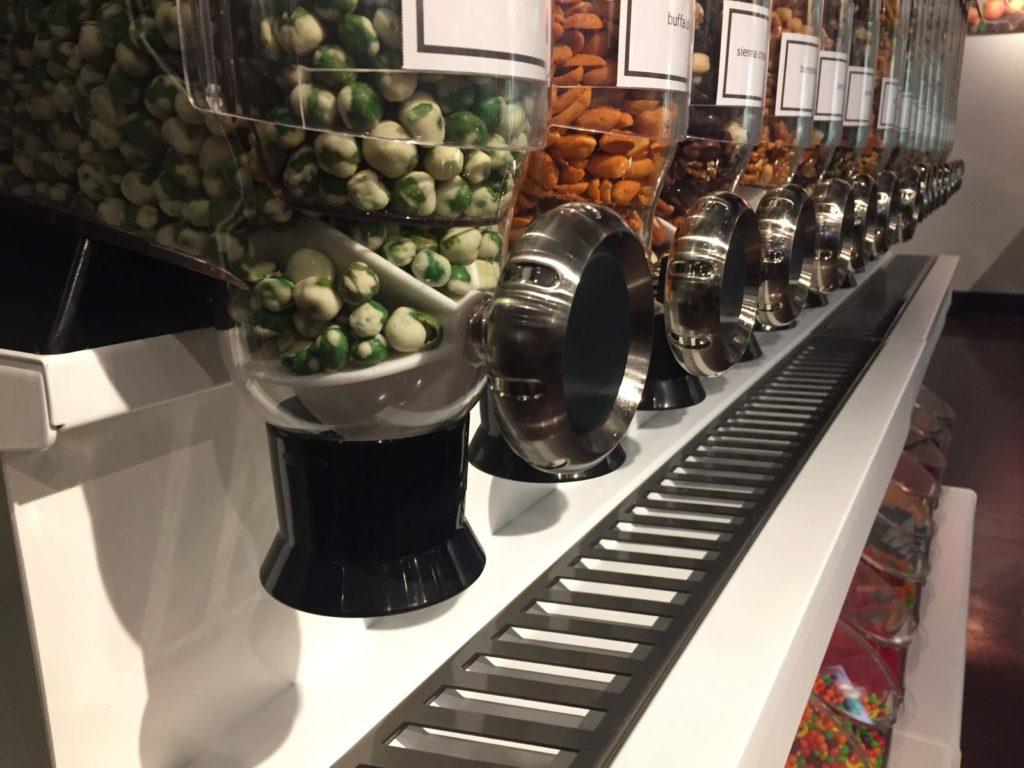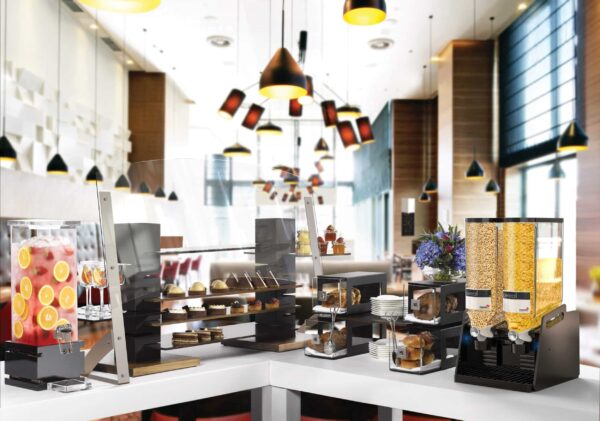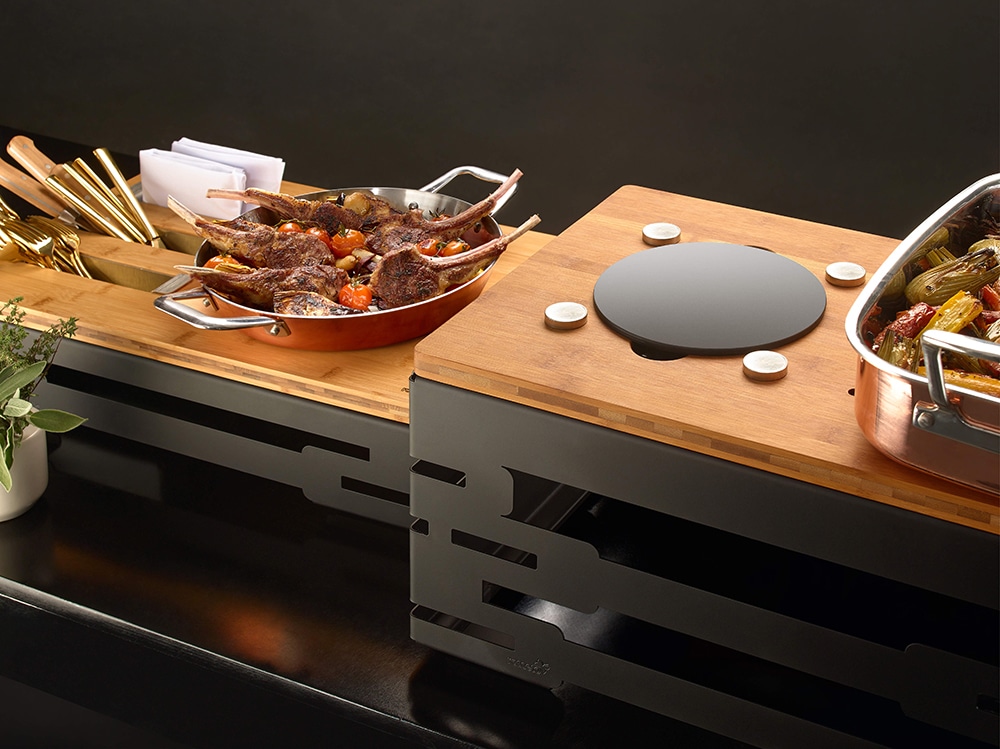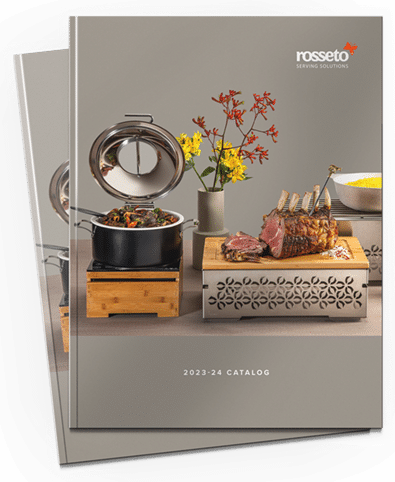As a caterer, you’ve more than likely heard of the saying that guests eat with their eyes first, then with their stomachs. There’s a reason food stylists exist: they want to make food look as appealing as possible before anyone grabs their forks and knives.
A banquet should be much of the same. However, with so many different foods available, it’s important to avoid overwhelming guests with too many options. There’s a subtle art to plating. These experts share their best tips and tricks for getting it right every time.
Limit How Much Food Is on a Plate
When loading up the plate, the pros say the magic number is four. For a well-rounded dish, serve sauce, vegetables, protein and starch. Anything more than that is too much.
“When you’re putting six, seven, eight items on the plate, it really slows the process down,” chef Michael Swann told Hotel F&B.
Keep Food and Drinks Away from Each Other
Remember how we mentioned how it’s important to prevent overwhelming guests with too many options? This is part of the reason to set up another table for drinks. Another good reason is to give guests something else to focus on while they wait for the main course.
“Getting a drink, especially if there is coffee, with its attendant pourers and packets of sugar, is a different flow,” says Faith Durand at TheKitchn. A drink station will also keep the line from getting clogged up too soon.
Keep Outdoor Temperature in Mind
Hotel chef Thomas Horner spoke to Meetings Imagined and says the season matters when selecting foods. “You wouldn’t want to do braised meat in the desert when it’s 100 degrees outside, so a cold turkey noodle salad in the summertime may be best,” Horner notes.
The Focal Point Matters
What’s the star of the show for your banquet? Seafood? Poultry? Make sure people know it. By focusing on this one element, other aspects of the dish, such as the accompanying vegetable or sauce, will play supporting roles to the main attraction.
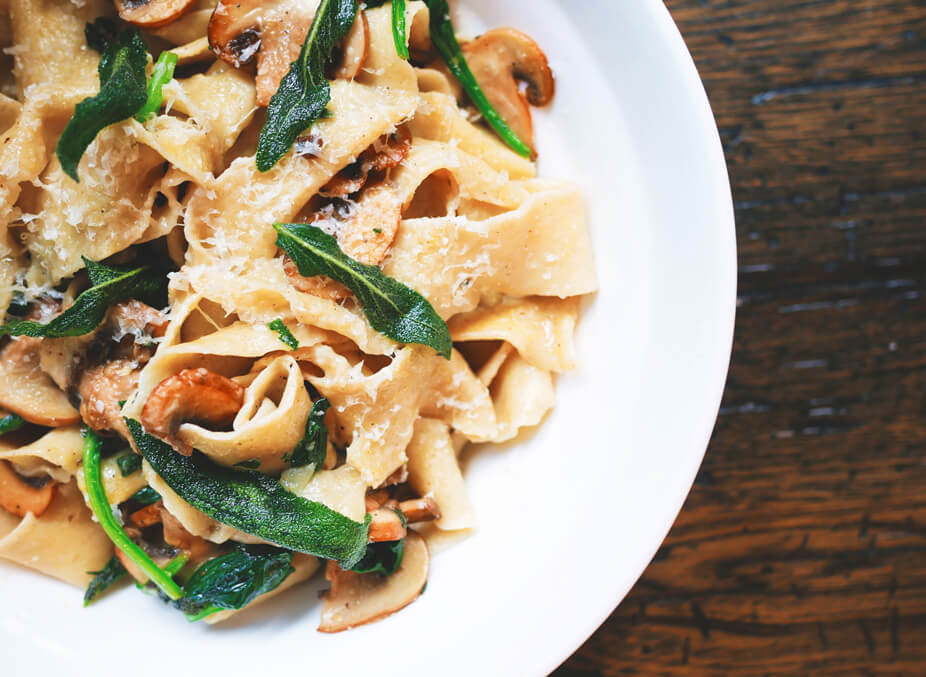
Swirl Sauce
Guests who go to fancy restaurants have probably been served a dish once or twice with a sauce swirl. This trick can be used for either dinner or dessert. How do you do it? Take a nickel’s worth of puree, and swirl it on an oversized plate.
Get Creative with Plates
Depending on the food you’re serving, you don’t always have to rely on a round plate. Consider rectangular or triangular plates instead. If you’re feeling extra bold, you can take this one step further. “Maybe it’s time to get involved in some fancy bits of slate or even a wooden platter,” SORTEDfood writes.
Bulk up Dishes
No guest wants to feel like their meal is sparse. With a bit of stacking, that’s avoidable.
“Create height on the plate, whenever possible,” Campbell’s says. “For meat with mashed potatoes, spoon sauce down first, then top with a mound of potatoes. Lean slices of meat against the potatoes, and add vegetables for a final touch.” That will certainly impress the crowd.
Go Easy on Garnishes
Especially with pasta, there’s no need to blanket a dish in garnishes. “Add a sprinkle of fresh herbs, a lemon wedge or even diced peppers, and you’d be surprised at the beauty you just conjured,” pasta company Panzani India writes.
Guests can continue piling on toppings if they want, like salt or cheese, but it’s their choice at that point.
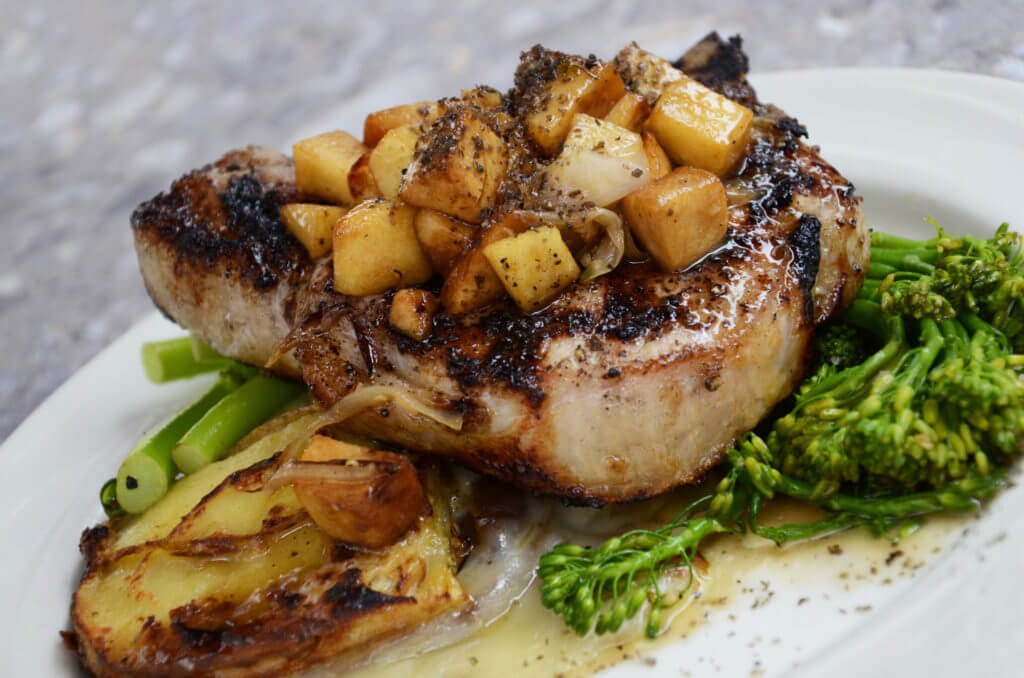
Pick Servingware Based on Food Colors
Do you prefer matchy-matchy or do you like a handful of colors? It’s time to show off your taste.
“Think of your plate as your canvas and the ingredients as the colors with which you’ll paint your masterpiece,” Mason at Kitchen Stories advises.
But Don’t Overwhelm with Colors
While you can certainly be creative when it comes to combining colors on a plate, there is such thing as overkill.
“While making a colorful food item, care should be taken that there cannot be more than three colors on a plate,” chef Ranveer Brar told Indian news resource Rediff.com. “There can be multiple hues and tints of the same color, but as a combination, it’s too confusing to see a lot of colors together.”
Vary Up the Cuts
When serving salad, the pros advise trying different cutting techniques for a truly memorable dish.
“When you add different kinds of fruits and vegetables, it is always a good idea to have at least two different kinds of cuts so when you build the salad, there is a beautiful variety,” Bernadett Vanek at food blog Born Under the Sun says. She suggests quartering strawberries and cutting down fennel.
Make Portions Manageable
It can be tempting to plate the biggest slab of steak or chicken, a huge mound of pasta or a mountain of salad. However, that’s not what most chefs do.
“The smaller amounts of food discourage overeating,” chef Kristina Kuehn tells Maryland news resource Argus Leader. “The diner can always go back for seconds and add more if need be.”
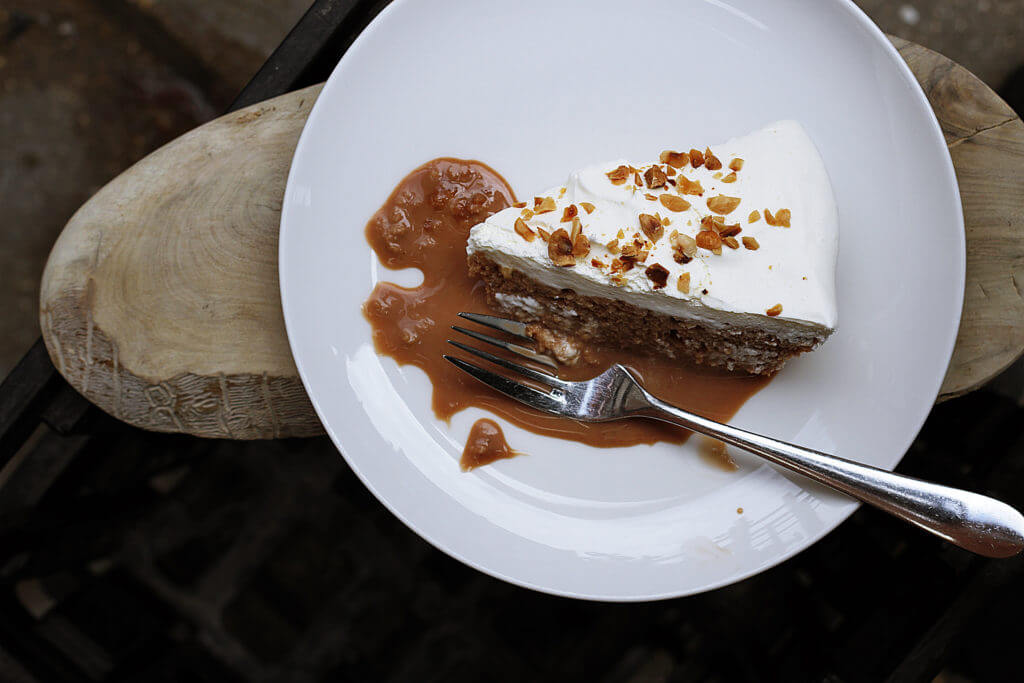
Serve Various Types of the Same Food
If presenting a cheese platter, a fruit spread or the like, don’t just serve one type of that food. Play up flavors for a varied platter.
“The ideal platter has a mix of hard cheddar, a creamy cheese such as brie or camembert, and a cheese flavored with pepper or chili to spice things up,” says Australian publication Onya Magazine.
Fan out Food
To convince guests that they’re getting more food than they actually are, and of course for the looks, consider fanning out certain foods, says Austin Hake at Spoon University. Apples, breads and cheese are ideal choices.
Redistribute Sauce
Above, we discussed how a sauce swirl impresses guests. What if a food has a lot of natural liquids though that aren’t quite as nice to look at?
Eatwell 101 suggests “draining the pieces of food on a cloth or paper towel so that the sauce does not flood the styled plate or spill into other foods.” They then say to redistribute the sauce from there so it looks more appealing.
Make a Textural Mashup
Have some fun and let two food items with varying textures play together that wouldn’t otherwise get the chance to. “The different textures excite the senses, giving an anticipatory sense of the taste pleasures to come,” Jessie Oleson Moore at Craftsy says.
Images by:
Jay Wennington, Toronto Eaters, Alex Munsell, Toa Heftiba

